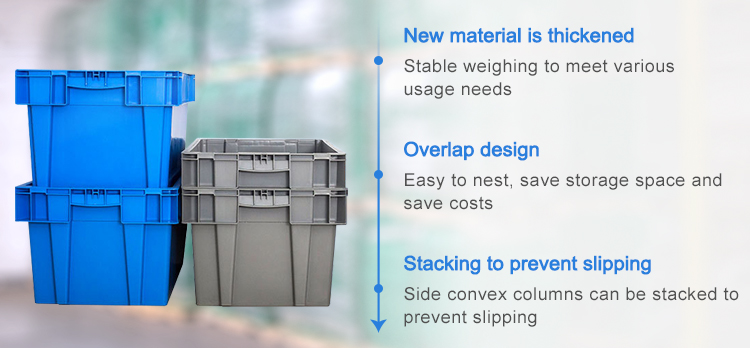In e-commerce warehousing sorting, manufacturing parts turnover, and supermarket restock transportation, “empty crates occupying warehouses” and “wasting capacity on empty crate transport” are long-standing pain points for practitioners—and Plastic Nestable Crates have become a practical tool to optimize supply chain efficiency, thanks to their core design of “nesting for space-saving and stacking for stable load-bearing.”
Durability is the basic guarantee. Made of thickened food-grade PP plastic, BPA-free, and resistant to temperatures from -20°C to 60°C, the crates have reinforced sidewalls that support 25-40kg per crate without deformation even when stacked 6-8 layers high. Compared to fragile cartons, they can be reused for 3-5 years, reducing packaging replacement costs and preventing damage to parts, fresh produce, and other goods due to crate breakage during handling.
The core advantage lies in the nestable design: Full crates can be stacked tightly to maximize truck cargo space and warehouse shelf space; when empty, they nest layer by layer—10 empty crates take up only the volume of 1 full crate, directly saving over 70% of empty crate storage space and reducing empty crate return transportation costs by 60%. This is especially suitable for high-frequency turnover logistics scenarios.
Adaptable to multiple scenarios: The crate body has a reserved label area for pasting logistics waybills or coding, facilitating cargo traceability; the smooth inner wall is easy to clean, suitable for storing both food and fresh produce (meeting contact standards) as well as electronic parts and daily necessities; the rounded edge design prevents scratches during handling, improving operational safety.
Whether organizing warehouses, transporting goods, or reducing turnover costs, Plastic Nestable Crates can be precisely adapted. Choose the right model now to make warehousing and transportation more efficient!
Post time: Oct-11-2025





